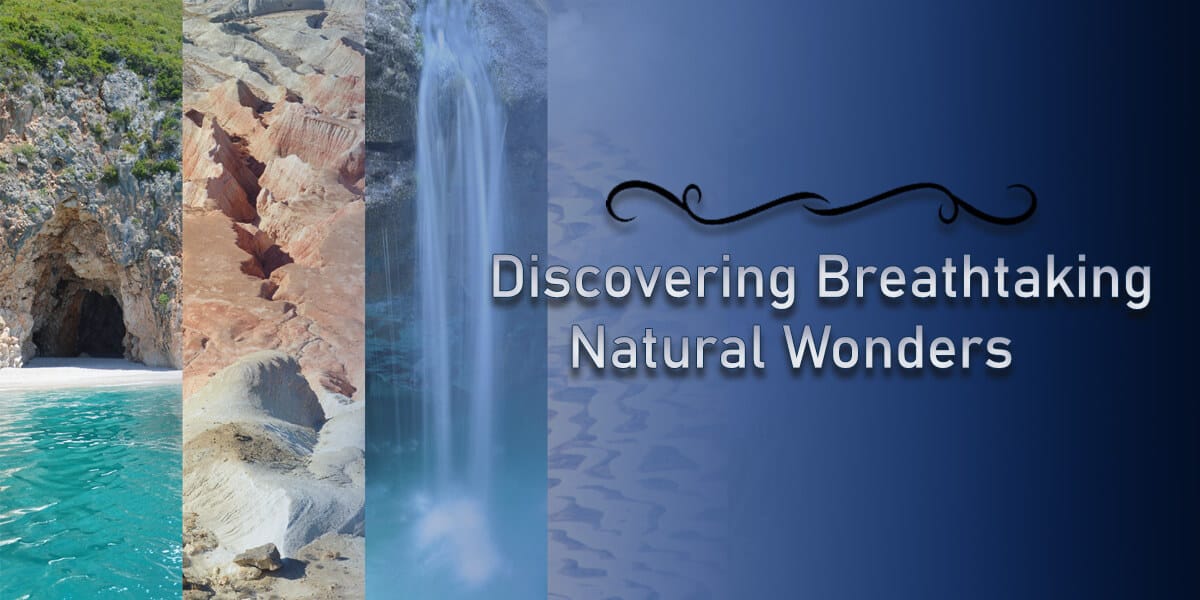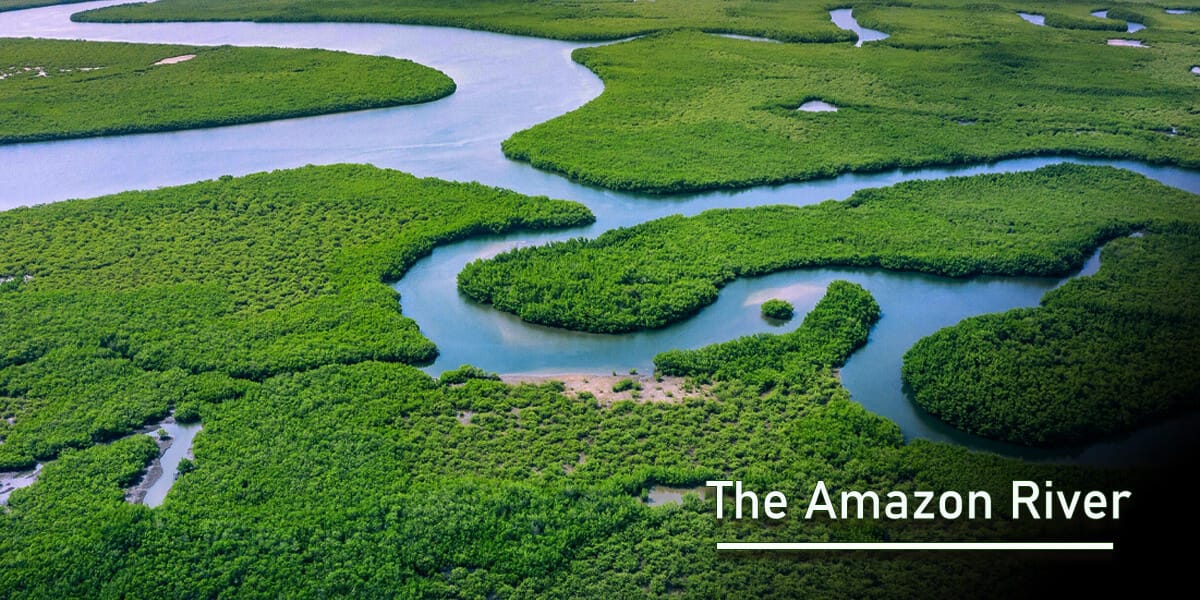Nature’s Bounty: Discovering Breathtaking Natural Wonders

Nature’s Bounty: Discovering Breathtaking Natural Wonders
To point out that the world is full of wonders is hardly a revelation, whether you’re talking about ancient or modern marvels, feats of architecture and engineering, or geologic and natural wonders that take your breath away with their beauty. So that’s why it’s surprising that so many lists limit their wonders of the natural world to single digits. That’s why we’ve compiled this list of natural wonders, incorporating places nominated on other top lists and places our editorial team thinks are the most beautiful and impressive on the planet.
From African deserts to European volcanoes to rare phenomena occurring across the globe, here are 39 of the planet’s most spectacular natural wonders of the world.
index
ToggleThe new seven natural wonders of the world
In 2000, the New7Wonders Foundation decided to reboot the seven wonders of the world concept so that the places on the list were still standing, organizing a global poll to determine what the new wonders would be. In light of the campaign’s success, the foundation decided to tally another set of votes, totaling over 500 million, to name the new Seven Wonders of Nature. Here’s the final list:
The Amazon River

One of Earth’s most impressive water bodies, the Amazon is the longest river in South America at over 4,000 miles. Its largest drainage system discharges roughly 7,4000,000 cubic feet per second. Whether or not the Nile is, in fact, longer is a point of contention for some as debates rage over the Amazon’s true headwaters.
Surrounding the river’s drainage basin, the Amazon Rainforest is just as impressive, stretching over nine countries and roughly 40 percent of Brazil’s land mass. With all that space, it’s no wonder the South American rainforest hosts more species than any other reserve, including countless species that have yet to be recorded.
Jeju Island

Jeju Island is a volcanic island and province of South Korea that sits south of the peninsula between South Korea and Japan. It’s where you’ll find the Jeju Volcanic Island and Lava Tubes, including both the extensive Geomunoreum lava system and Mount Hallasan (the highest mountain in South Korea).
Ha Long Bay

Ha, Long Bay in northern Vietnam is a popular tourist destination thanks to its gorgeous limestone karsts and floating fishing village. The landscape formed by its 1,600-2,000 islands and islets, most uninhabited, is spectacular. Thanks to these unusual landforms, many still unaffected by human impact, the area became a UNESCO World Heritage site in 1994.
Iguazu Falls

The famous Iguazu Falls straddles the Iguazu River on the border between Argentina and Brazil. Its name, Iguazu, means “big water” in Guarani, and it seems appropriate — made of 275 waterfalls, it’s the largest waterfall system in the world. The tallest of these waterfalls, where approximately half of the river’s flow falls, is called the Devil’s Throat — a long, narrow, U-shaped chasm whose thunderous sound visitors never forget.
Puerto Princesa Subterranean River

The Puerto Princesa Subterranean River is located on the Philippine Island of Palawan and leads into a cave through which you can take boat tours. It was impressive enough as it was, but in 2010, a group of environmentalists discovered the river has a second floor, so there are small waterfalls inside the cave. As the river emerges directly into the sea, its lower portion is subject to tidal influences.
Komodo Island

Komodo Island is part of the Indonesian archipelago and is famous for being home to komodo dragons in Komodo National Park. Its history also makes it a special place as its inhabitants (around 2,000, compared to the island’s 5,700 remaining Komodo dragons) are said to be descendants of former convicts who were exiled to the island in the 19th century by a sultan in Sumbawa. Also found on the island is Pink Sand Beach, one of the world’s best destinations for snorkeling and diving when the island is open to visitors.
Table Mountain

Table Mountain is a famous landmark that towers over Cape Town, South Africa. Some great city views are from the top (accessible via a hiking trail and cableway). Its main feature is a level plateau that stretches approximately two miles from side to side, edged by impressive cliffs. It’s also a cool place to practice some cloud watching — from afar — as the famous tablecloth clouds often cover the plateau.
Wonders of the natural world nominations
While the wonders below didn’t make the final list with the New7Wonders foundation, they’re arguably just as impressive, and you’ll find them nominated on many a list of potential new additions.
The Great Barrier Reef

Australia’s famous, gigantic barrier reef is sadly at risk of being destroyed by climate change, overfishing, and tourism. Coral bleaching is more widespread than previously thought, and scientists have admitted this great wonder is at a terminal stage and in desperate need of humans to alter their behavior. It’d be a sad end for the largest natural structure in the world.
The Grand Canyon

The famous, massive canyon cut by the Colorado River through Arizona is one of the few wonders that belongs on every iteration of this list. At 277 miles long, up to 18 miles wide, and attaining a depth of over a mile, it’s not the longest nor the steepest canyon in the world. Still, its overall scale, combined with the beautifully coloured landscape, makes it one of the most amazing natural wonders. According to several studies, the Colorado River has been carving this canyon for five to six million years.
Harbor of Rio de Janeiro

Brazil’s most famous city fills in the spaces between the surrounding mountains and the ocean, making it one of the most beautiful cities on Earth. Above all, it’s watched over by the Christ the Redeemer statue — one of the regularly cited artificial wonders of the world.
Mount Everest

Everest’s peak is 29,035 feet above sea level, or at least it was. Nepal’s earthquake in 2015 is believed to have clipped the mountain’s height, so India and Nepal are about to measure it afresh. For the sake of counting these, if you’ve seen Mount Everest, located on the border of Nepal and Tibet, you’ve been to it. You don’t have to have made it to the summit.
Nighttime aurorae

The aurora (also known as the aurora borealis, northern lights in the north, and aurora australis in the south) is caused by the collision of solar winds with Earth’s magnetosphere. It can be viewed from anywhere within certain latitudes, depending on the visibility and severity of the geomagnetic storms.
Victoria Falls

Victoria Falls — on the Zambezi River between Zimbabwe and Zambia — is the largest waterfall by volume in the world at over 5,500 feet wide and 355 feet high. Its local name in Tokaleya Tonga is Mosi-oa-Tunya, which means “the smoke that thunders,” which perfectly explains what you’ll feel if you get close to it.
Paricutín volcano

Paricutín volcano in Mexico makes it on most lists just for the sheer bizarreness of its history. It was a cornfield in 1943, and then, in a year, it grew to 11,475 feet. When the volcano’s eruptions ceased in 1952, its peak measured 9,210 feet above sea level. The villages around it are buried in lava; only a church bell tower juts out from the rock.
Moraine Lake

Moraine Lake, which you may recognize from many a default screensaver, is one of Canada’s most beautiful — and busiest — places. Near Lake Louise, Moraine Lake shares the same distinctively blue water caused by tiny rock particles from the nearby glaciers that float on the surface and reflect that brilliant blue color. You must take a shuttle from Lake Louise Ski Resort if you want to visit. Try to get there as early as possible. If it’s too crowded, hike to a high-elevation near Lake Louise, which looks down on the Victoria Glacier.
The Dead Sea

The Dead Sea, on the border of Jordan and Israel, is one of the saltiest bodies of water in the world. So salty that you can famously float in it, and no macroscopic organisms can survive in it. It was one of the world’s first health resorts (for Herod the Great) and has supplied various products, from asphalt for Egyptian mummification to potash for fertilizers. However, it’s receding at an alarming rate.
Recent Posts
Contact Us
+1 437 499 4559










